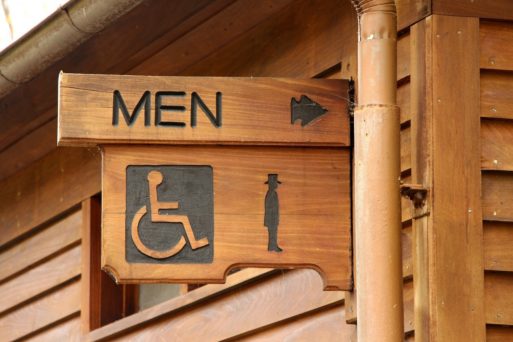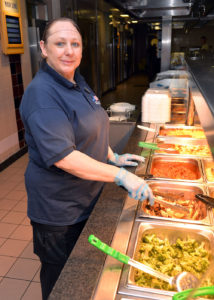Many people who use opioids illegally use public restrooms to get high. Despite locks and other safeguards installed by cautious owners, public restrooms in many restaurants, coffee shops, libraries and retail stores are easily accessible to opioid users who are motivated to find a way in. The restrooms are quiet and private, and provide a modicum of safety as compared to public spaces like stadiums and parks.
 And, sadly but predictably, opioid overdoses go hand in hand with opioid use — a reality that’s resulted in a spate of deaths and close-calls in public restrooms across the United States. In May, a 32-year old Chicago woman died in the restroom of a White Castle after injecting herself with fentanyl-laced heroin. That same month in the nearby suburb of Downers Grove, a man was found dead of a suspected drug overdose in the public restroom at Starbucks. And just last month in Ohio, a woman overdosed and gave birth in the bathroom at a Burger King. (Miraculously, both the mother and the baby survived.)
And, sadly but predictably, opioid overdoses go hand in hand with opioid use — a reality that’s resulted in a spate of deaths and close-calls in public restrooms across the United States. In May, a 32-year old Chicago woman died in the restroom of a White Castle after injecting herself with fentanyl-laced heroin. That same month in the nearby suburb of Downers Grove, a man was found dead of a suspected drug overdose in the public restroom at Starbucks. And just last month in Ohio, a woman overdosed and gave birth in the bathroom at a Burger King. (Miraculously, both the mother and the baby survived.)
Service Workers First at the Scene
Public restrooms have long been recognized as places where illicit drug use goes on. But with the number of opioid users in the United States climbing, the prevalence of overdoses in public restrooms has had an unexpected result: Service workers like cooks and baristas and librarians are now finding themselves in the unenviable position of responding to suspected overdoses they encounter at work. According to a 2017 study published in the Journal of Drug Policy, nearly 60 percent of New York City business owners have encountered drug use in their public restrooms, yet the vast majority said they were unprepared to either recognize an overdose or treat it when it occurred.
In an effort to better educate service workers, in 2014 the Boston Public Health Commission developed a Safe Bathroom Initiative, a series of trainings that offered information about how to recognize an opioid overdose. The trainings also included instructions on how to administer naloxone, a drug that binds to opiate receptors in the brain and quickly reverses opioids’ effects. Then, in 2017, the agency made the training available online. But they didn’t collect any data as to whether the trainings had any measurable effect on the ability of service workers to respond to an opiate-related emergency.

Credit: U.S. Air Force/ Karen Abeyasekere
Now, in a small study published last week in the journal Drug and Alcohol Dependence, researcher Brett Wolfson-Stofko and his colleagues at New York University have made an effort to learn if appropriate training can improve service workers’ knowledge and prevent overdose deaths. In a 20-minute training session, they instructed 18 service workers in how to recognize and treat an opioid overdose and administer naloxone. The workers were also given training in how to interact with suspected drug users and de-escalate confrontations when they occurred.
Before and after the training sessions, the workers were asked to complete the Opioid Overdose Knowledge Scale and Opioid Overdose Attitude Scale, a tool developed in London to assess the readiness of non-medical personnel to respond to drug overdoses among family members and friends. The researchers found that the workers’ scores improved significantly on measures related to both recognizing an overdose and correctly administering naloxone after the training. Said one study participant, “The way that I would figure out these instructions on this [naloxone kit], someone could die. So the hands-on instruction is super good,” reports The Atlantic.
A Small Step
Of course, training service workers in how to treat an opiate overdose is not an answer to the opioid crisis, nor is it intended to be. However, giving those who may encounter an overdose the tools to take appropriate action may not only save lives, but also diminish the trauma workers who find themselves in such a situation may experiences as a result. “There’s definitely secondary trauma to witnessing overdoses and seeing people near death,” said Sarah Wakeman, the medical director of the Massachusetts General Hospital Substance Use Disorders Initiative. But, she added, “I think it’s much more traumatizing to find someone dead in the bathroom and not be able to help them.”

 Service Workers Becoming First Responders in the Opioid Crisis
Service Workers Becoming First Responders in the Opioid Crisis


 “Help Me, Helen”
“Help Me, Helen”

 “As Tears Go By” by Marianne Faithfull
“As Tears Go By” by Marianne Faithfull














